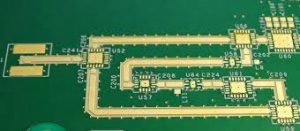How do you calculate impedance for RF PCB traces?
calculate impedance for RF PCB traces
RF PCB traces have to match impedance with RF components, or they will cause reflections and power loss. This requires careful calculations, as the impedance of the conductor depends on geometry and dielectric properties, but also on its length and signal frequency. The best way to calculate these parameters is to use an online RF impedance calculator.
This tool will help you design and optimize RF circuits. It allows you to enter the circuit components and their characteristics, then it automatically suggests a good impedance model for each trace on your board. This way, you can minimize the amount of signal reflections and improve the overall performance of your system.
A PCB is an electronic component with a complex, 3-dimensional structure that supports signals at high frequencies. Its layers are made of different materials, which have varying thicknesses and dielectric constants. Getting these layers just right is crucial for minimizing noise and signal delays, and for ensuring the accuracy of your measurements. A good PCB impedance calculator will be able to account for all of these factors and help you find the perfect design for your board.
Impedance is determined by the geometry of the transmission line, so impedance calculators will need to include a range of options for different types of traces and geometries. They must also allow for different dielectric substrate materials, which vary in their permeability and dissipation. This will influence the reflected power and even- and odd-mode impedance.

How do you calculate impedance for RF PCB traces?
The physics behind these impedance models is complicated and requires knowledge of both electromagnetic field theory and advanced mathematics. Practical models must balance speed and accuracy, as they are based on curve-fitting approximations to fundamental electromagnetic fields equations. This makes them difficult to use without a computer program, but an online impedance calculator can simplify the inputs and provide a good starting point for your designs.
An online RF PCB impedance calculator will allow you to select the geometric parameters and layer arrangement that will determine the impedance of your traces. It will then use a field solver to solve the impedance equation and calculate the trace width that will produce your target impedance. This process can be done using a random or directed search algorithm, and it can be performed at speeds that are much faster than manual calculations.
The physics of an idealized transmission line assumes that the current takes up the entire cross-sectional area of the conductor. However, at higher frequencies, eddy currents force the current to occupy only the outer edges of the conductor’s cross-section. This phenomenon is called skin effect, and it affects the impedance of an RF trace. Consequently, the impedance of a high-speed circuit must be adjusted to compensate for this phenomenon. For this reason, it’s best to use a high-speed impedance calculator that can perform fast simulations while maintaining the accuracy needed for proper RF circuit design.
RF (Radio Frequency) PCB fabrication involves intricate processes and specialized materials to ensure optimal performance in electronic devices operating at high frequencies. Several key components are commonly employed in rf pcb fabrication to meet the stringent requirements of signal integrity, impedance matching, and minimal signal loss.